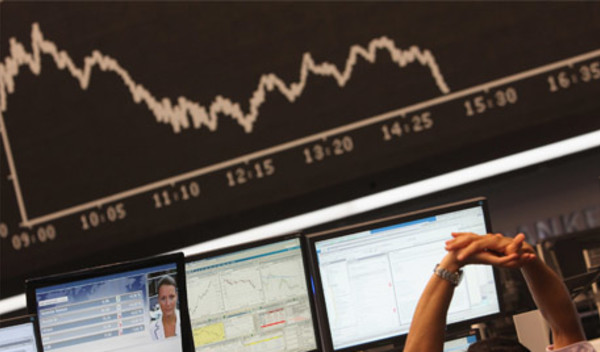

The £1.5bn Witan Investment Trust has ramped up its equity exposure using derivatives in the face of recent market falls.
The trust’s management team added exposure to the UK and emerging markets in both August and September as markets fell in the face of mounting concerns over global growth.
Witan investment director James Hart said the team used equity futures to gain quick exposure to the FTSE 100 and MSCI Emerging Markets indices, which raised the vehicle’s gearing level – the debt to equity ratio – to 12 per cent at the end of September.
Mr Hart said in spite of concerns around slowing Chinese growth and struggling corporate profitability, he thought the “market is looking in pretty good shape”.
“It’s not an enormous move, but there was an opportunity to take advantage of market weakness when we think things are set relatively fair,” he said.
The Witan team added money in two stages: first buying exposure after global markets fell precipitously on August 24, before adding more in September.
Mr Hart explained the reason for using futures was to guarantee access to markets, whereas any money given to the trust’s third-party managers may not have been invested immediately.
The director also thought market concerns about China might be overplayed, with too many commentators focusing on poor industrial and property sector data, while ignoring the booming services market.
He said the managers with whom Witan invests have also raised concerns about equity dividends, as company profits have disappointed so far this year across the globe.
“Managers are starting to question the ability of some companies to pay dividends, especially in the quality sectors that have led markets higher in recent years,” Mr Hart said.
He added that while he didn’t expect widespread cutting of dividends, the lack of revenue and profit growth in many companies meant dividend growth could struggle.
However, he said there were still opportunities in “fairly priced” global equities.
Asia and emerging markets were hit particularly hard in the recent market falls and Mr Hart said the Far East was now one of the main regions, along with Europe, into which the Witan team would look to add money.
By contrast, the director said he had been avoiding adding to US equities this year and would probably continue to stay away for the foreseeable future as the region still looked “highly valued”.
“US equities are quite highly valued, especially compared with European and other global indices, so the chance of a negative rerating is higher,” he said.
The ramping up of the trust’s gearing has helped Witan return to the top of the performance charts in October’s market rally.
The trust, which occupies a top-quartile spot in its Association of Investment Companies Global sector across one, three, five and 10 years, had relatively suffered through the market downturn in the summer.
The trust has delivered 70.2 per cent in the past three years, data from FE Analytics shows.
‘Direction of travel’ still lower for UK weighting
The Witan Investment Trust adopts a different benchmark and regional weighting to many of its peers.
Its benchmark comprises 40 per cent in the FTSE All-Share index, and 20 per cent respectively in the FTSE All World Europe ex UK, FTSE AW Asia Pacific and FTSE AW North America indices.
Investment director James Hart said the main reason for the high UK weighting, which makes up just 8 per cent of the MSCI World index, was that the vast majority of its shareholders are based in the UK so it was “natural” to have more money invested there than where a global index would suggest.
But Mr Hart said the trust’s board regularly debated its benchmark, although no change in its structure was imminent.
He said the move down from 60 per cent to 40 per cent in UK equities gave an indication of the likely “direction of travel” in any future changes, with the benchmark weighting to the UK “more likely to fall to 30 per cent [rather] than up to 50 per cent”.



